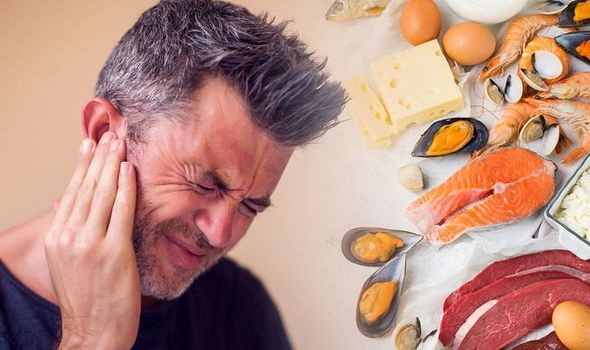What is the possibility of a bug entering your ear? Even though it rarely happens, bugs do enter your ears when you are sleeping or out on a walk.
Depending upon the type of bug and the duration for which it lives in there, your ear can go through some side effects. These include redness, pain, or itching. So, it is important to identify the bug's presence as soon as possible and treat it.
This article will guide you on how to tell if a bug is in your ear and what steps can you take for safe removal.
Table of Contents
Part 1: How to Tell if There is a Bug in Your Ear?
Part 2: What to Do If a Bug is in Your Ear?
Part 1: How to Tell if There is a Bug in Your Ear?
1.1 Common Symptoms of Bug in Ear
Sometimes, unknown to us, bugs enter our ears and reside there. Due to the presence of cranial nerves outside the eardrum and in the external ear, we can easily feel irritation. We might ignore it as a regular itch but it is not.
You can recognize the presence of a bug in your ear by observing the changing sensations in your ears. Following are the bug in ear symptoms:
-
Buzzing sounds of bug
-
Pain and discomfort as the bug moves
-
The sensation of fullness or congestion in the ear
-
Any fluid like blood or pus coming out of your ear that indicates any ear injury
-
Extreme pain in case the insect bites your ear
-
Ringing sounds in the ear that are similar to tinnitus
-
Muffled sounds
-
Dizziness and fever in some cases
An adult can easily observe these changes but children are usually less keen and might not notice this issue. So if you see your child complaining of pain or continuous itching in the ear, check it thoroughly.
1.2: How to Check if a Bug is in Ear with Ear Camera?
You think there is a bug in your ear but to confirm it, you can use the Bebird Note5 tool with an ear camera. You can confirm the issue at home with a camera and then visit the doctor for a solution.
Properties
With a camera, the Bebird 3-in-1 ear wax removal tool lets you remove even larger chunks of wax by using a 360° switch control for tweezers. Its robotic arm with the convex angle of tweezers allows precise foreign body removal. Let’s see how the camera of this Note5 model can help you identify the insect:
-
The 10-megapixel camera enables a clear view of the ear canal
-
A gimbaled gyroscope keeps the image stable even when the handle vibrates
-
The lens diameter is only 3.2mm and can fit even in a kid’s ears
How to Check Bugs with Bebird Ear Camera?
Let’s understand the steps of using this high-end camera:
-
As you open the magnetic cap of the tool, it turns on
-
Download the app by scanning the QR code written on the user manual
-
Connect your WIFI to Bebird Note5
-
Now open the app and click the Go button. It will give you some instructions, read them carefully before starting
-
After that, you can start scanning your ear canal and see the visuals on your app
-
The change between ear tip mode and tweezer mode, you can press the 360° switch control
Part 2: What to Do If a Bug is in Your Ear?
Now if there’s a bug in your ear canal, you first need to stay calm. Do not start jumping, screaming, or panicking as it can make the bug go even deeper. Then what to do if a bug gets in your ear?
Avoid Self-Removal
After seeing a bug, our first instinct is to go get a cotton bug and attempt bug removal. The cotton bug is round from the front and has a large diameter. It can never hold the bug or stick with it. As you move it back and forth in your ear, it pushes the bug even deeper. On top of that, the bug can feel threatened and might bite your ear in its defense.
Another mistake is using sharp objects. A key, a safety pin, matchsticks, and whatever small can fit in our ears are used for cleaning ears. They not only push the foreign body towards the inner ear but can also tear the eardrum. So, no matter how strong the urge is, avoid self-removal.
Use Warm Water or Oil
If you do not want to go to a doctor in any case, you can use some safe home remedies. However, these remedies do not offer 100% positive results.
Using Warm Water
Warm water aids in bug removal by flushing the bug out of your ear. It can also soften the ear wax and remove it along the bug. This is usually more suitable when the bug is dead.
After making sure that the bug is dead, take some warm water and squirt some warm water into the ear using a bulb syringe. Then, tilt your head with the affected ear in a downward direction. Shake your head gently to let the water out along with the bug.
Using Oil
Oil is beneficial if the bug is alive. You can use either vegetable oil or mineral oil for this purpose. Unlike warm water, tilt your head in a way that your affected ear faces up. Now pour some warm oil into your ear slowly until your ear is full.
After 5 to 10 minutes, the bug dies in your ear and that is when you need to turn your head gently. This makes the oil and the bug seep out of your ear.
Seek Medical Help
If you spot any bug in your ear, seeking medical attention can prove the best option. Trying home remedies is risky as they can trigger the bug to bite you or push it deeper.
Therefore, contact a medical professional immediately after confirming the presence of a bug. You can try one or two home remedies but if you still cannot remove it, stop trying more ways and go to the doctor. A specialist knows very well about various safe ways of getting the foreign body out of your ear.
Moreover, they can assess any harm caused by a bug to your ear and treat you accordingly.
Part 3: FAQs
How Long Can a Bug Live in Your Ear?
Usually, the bug dies in a short time. Maybe a few minutes are enough to kill it. However, in some cases, they might live longer than the usual time. It can take a few hours or days. The time for a bug to reside in your ear depends upon different circumstances like the lifespan of insects and their ability to live in certain environments.
For instance, some people have experienced a tick living in the ear for a week. While it's inside your ear, it can sting it or scratch it looking for ways to go out. This makes ears inflamed and red. So prompt removal is necessary if you do not want any hearing problems.
What Happens If a Bug Crawls in Your Ear?
If a bug crawls in your ear, you might not notice it at first or have an uncomfortable sensation. Then, you will start hearing buzzing sounds, scratchy noises, and muffled voices after some time. As the process continues, you are likely to experience redness, swelling, and itching in your ear.
This is the time when you need to get your ear checked. In some worst-case scenarios, a bug can start biting in your ear causing pain, pus or blood discharge, or rupture of your ear drum.
Can You Leave a Dead Bug in Your Ear?
A dead bug is not as problematic as an alive bug however it is also not completely harmless. Some people assume that the body of a bug will decompose on its own and there will not be any problem.
This is wrong. Leaving a dead bug's body in your ear increases the risk of infection. This infection leads to ear inflammation, watery discharge, and continuous tingling sensation. Moreover, there are chance that wax will accumulate around this dead body. It can push the bug deeper making things even worse.
Conclusion
When e bug is present in your ear, it can cause redness, inflammation, tingling sensation, unusual sounds, fluid discharge, and pain. The best way to confirm its presence is to use an ear camera. Once you confirm the presence, do not start panicking as it can alarm the bug.
Additionally, self-removal tricks can push it deeper. Therefore, seek a professional as early as you can to resolve the issue safely. Also, focus on acting upon preventive measures to minimize damage. These include frequent touching of your ears and shaking your head.
















Leave a comment
All comments are moderated before being published.
This site is protected by hCaptcha and the hCaptcha Privacy Policy and Terms of Service apply.